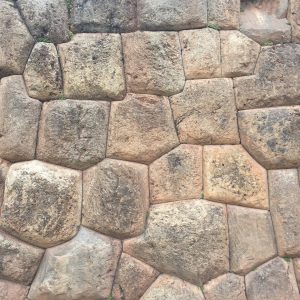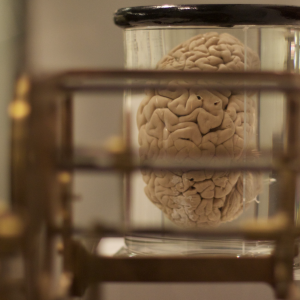Want to experience the greatest in board studying? Check out our interactive question bank podcast- the FIRST of its kind here: emrapidbombs.supercast.com
Author: Blake Briggs, MD
Peer Reviewer: Travis Smith, DO
Introduction
Bell’s palsy is the most common peripheral paralysis of the facial nerve or cranial nerve VII, has an incidence of 20 per 100,000 and carries a lifetime risk of 1 in 60. Around 70% of facial nerve palsies will be diagnosed as Bell’s. The etiology is often unclear, usually idiopathic. There are some thoughts regarding inflammation and swelling of the facial nerve, but who knows. The second most common cause is likely reactivated herpes simplex or from another viral etiology like EBV or VZV. Other causes include trauma, autoimmune conditions, and neoplasms. Major risk factors include diabetes and pregnancy (three times greater risk during the third trimester). Let’s delve into the presentation, diagnosis, and management of this condition.
Anatomy
The facial nerve has multiple functions as it supplies motor and parasympathetic function, taste to the anterior two-thirds of the tongue, as well as control of the salivary and lacrimal glands.
Pathophysiology
Strokes can cause unilateral facial weakness, but in almost all cases, they spare the forehead muscles because the impairment is that of an upper motor neuron type (due to bilateral innervation to this area).
Bells palsy is a unilateral facial weakness due to palsy in the facial nerve itself, thus involving the forehead.
Accelerate your learning with our EM Question Bank Podcast
- Rapid learning
- Interactive questions and answers
- new episodes every week
- Become a valuable supporter
Presentation
There will be paralysis of the muscles on one half of the face, including an inability to raise eyebrows, wrinkle the forehead or close the eyelid. There is often loss of the nasolabial fold, and the mouth will droop.
The key here is that there are no sensation changes. Cranial nerve V is not affected (provides innervation to the face). There should never be any pupillary changes and no eye muscle changes.
In short, no other cranial nerve should be affected.
Classically, the onset is acute, usually overnight. In fact, patients often wake up seeing their facial droop and are immediately frightened they are having a stroke. Symptoms peak at 72 hours, and no other neurological symptoms should be present.
Bilateral facial nerve palsy is classically associated with Lyme disease and is the correct answer on every test question, but it’s not just tick-borne illnesses you need to look out for. Other sinister intracranial events like masses can cause it too. In the correct clinical context of bilateral facial nerve palsy and suggestion of intracranial mass, get advanced imaging.
Other symptoms of note include a difference in taste, sensitivity to sound, otalgia, and changes to tearing and salivation.
Other causes of Bell’s palsy to be aware of: Ramsay Hunt syndrome, otitis media, HIV, Guillain-Barré, sarcoidosis, tumors, and stroke (yes, we said it).
Diagnosis and differential
The physical exam is enough to rule out Ramsay Hunt syndrome, which will present with vesicular rash in the ear and possibly vesicles in the ear canal. We have a great table at the end of this handout detailing some key differences.
The most common neurological finding in Lyme disease is facial nerve palsy. However, Lyme disease usually presents with other symptoms (most commonly the erythema migrans rash and the absence of other symptoms).
Concerning neurological findings that should prompt further neurological evaluation:
– any other cranial nerve involvement, stepwise progression of facial palsy, or slow progression beyond 72 hours
– recurrent facial palsy (e.g., resolves and recurs frequently)
– prolonged facial palsy greater than four months with no prior imaging
– other neurological deficits
– unaffected upper facial muscles (duh)
The rule that strokes never involve the unaffected upper facial muscles is not 100% true. Rarely, ipsilateral pontine strokes or masses can lead to a lower motor neuron pattern of facial weakness. However, in this case, there is dysfunction of the ipsilateral abducens nerve resulting in a lateral gaze palsy. This can help differentiate between Bell’s palsy and stroke.
The key with all suspected Bell’s Palsy patients is to get a very good history, perform a detailed neurological exam, and look for any associated signs or symptoms.
Work-Up
There are no necessary labs or imaging that is diagnostic of Bell’s, as it is a clinical diagnosis. The vast majority of patients without any of the aforementioned “red flags” need no further workup in the ED. If there are atypical or red flag symptoms present, it is imperative to rule out other more sinister causes such as stroke, mass on the parotid gland, or stroke of the CN VII nucleus. There is not a true consensus on the preferred type of imaging in these concerning patients. Some consultants want a plain brain imaging with a CT scan on all patients, others do not. An MRI is the modality of choice as it can detect if there is any facial nerve inflammation, the presence of a schwannoma, hemangioma or any other space-occupying lesion.
Management
There is much debate on the proper treatment. No one debates the role of steroids. Steroids have been found to dramatically improve recovery (Grade 1A). Treatment with steroids should begin within three days of symptom onset. The suggested regimen is Prednisone 60-80 mg/day for one week.
Some sources state that acyclovir might have a role in severe cases of Bell’s Palsy, as defined by this scoring system that we assume no EM physician has ever heard of (House-Brackman). This grades symptoms on a scale from I (no weakness) to VI (complete weakness). However, there has never been any study that has proven the benefit of antiviral therapy. A large Cochrane review from 2019 stated that acyclovir was not warranted and did not change recovery compared to steroids alone in all degrees of severity. The debate likely rages on in the neurology world, but the key is to understand that steroids are the most important part of treatment.
Remember that eye care is essential due to the inability to completely close the eyelid. Erythromycin ointment and artificial tears are important. The patient can also tape the eye at night to prevent abrasions.
Prognosis
Overall good. 85% regain function in 3 weeks with steroid therapy. Those who do not have good outcomes usually will present with complete paralysis, age > 60, and/or have decreased salivation or taste on the ipsilateral side. The longer the recovery, the more likely that residual sequelae may develop. Recurrence is not uncommon, occurring in up to 15%.
References
1. Gagyor I, Madhok VB, Daly F, Sullivan F. Antiviral treatment for Bell’s palsy (idiopathic facial paralysis). Cochrane Database Syst Rev. 2019 Sep 5;9(9):CD001869. doi: 10.1002/14651858.CD001869.pub9. PMID: 31486071; PMCID: PMC6726970.
2. Gronseth GS, Paduga R, American Academy of Neurology. Evidence-based guideline update: steroids and antivirals for Bell palsy: report of the Guideline Development Subcommittee of the American Academy of Neurology. Neurology 2012; 79:2209.
3. Monkhouse WS. The anatomy of the facial nerve. Ear Nose Throat J 1990; 69:677.
4. Hilsinger RL Jr, Adour KK, Doty HE. Idiopathic facial paralysis, pregnancy, and the menstrual cycle. Ann Otol Rhinol Laryngol 1975; 84:433.
5. May M, Klein SR. Differential diagnosis of facial nerve palsy. Otolaryngol Clin North Am 1991; 24:613.
6. Warner MJ, Hutchison J, Varacallo M. Bell Palsy. [Updated 2021 Aug 11]. In: StatPearls [Internet]. Treasure Island (FL): StatPearls Publishing; 2021 Jan-. Available from: https://www.ncbi.nlm.nih.gov/books/NBK482290/



